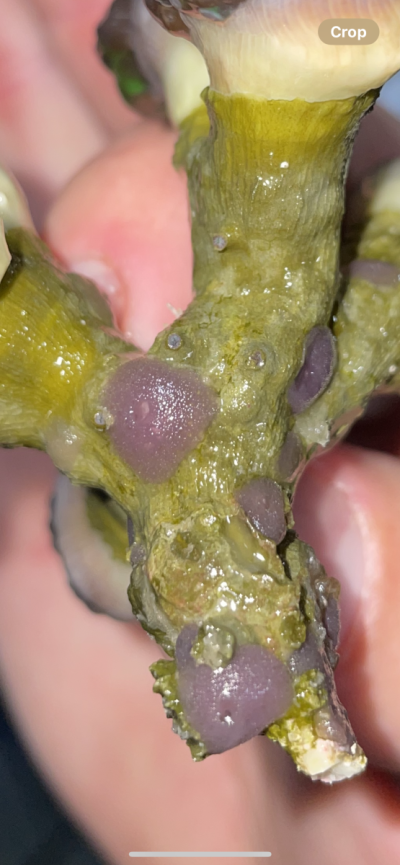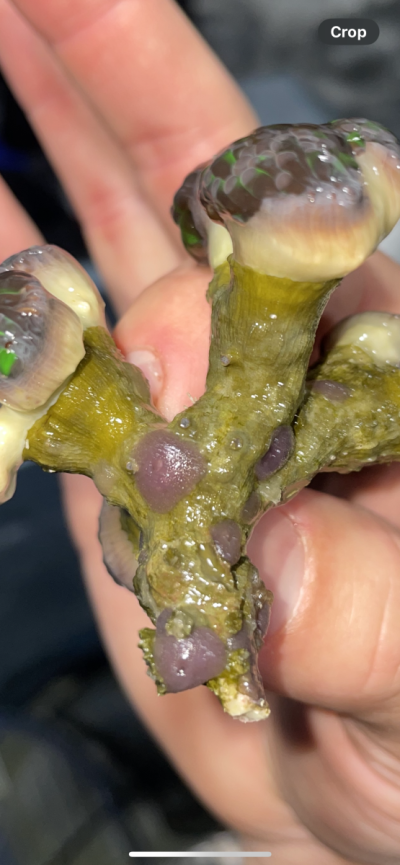Navigation
Install the app
How to install the app on iOS
Follow along with the video below to see how to install our site as a web app on your home screen.
Note: This feature may not be available in some browsers.
More options
You are using an out of date browser. It may not display this or other websites correctly.
You should upgrade or use an alternative browser.
You should upgrade or use an alternative browser.
Hmm, what are these??
- Thread starter jokerjohnson
- Start date
- Tagged users None
Sponges. . . likely harmless.
I have the same awful luck as you lol, though this just looks like sponge and shouldn't harm the colony, in fact they will probably die off after being exposed to air, though to be sure, @ISpeakForTheSeas?
Yeah, probably sponges (though they're generally easier to ID in the water) - as a general rule of thumb, if the corals are opening up/acting happy and the sponges aren't growing over and smothering the polyps, the sponge is harmless/beneficial.
With regards to the air thing, it probably won't kill (or even hurt) the sponges unless they're left out long enough to desiccate:
With regards to the air thing, it probably won't kill (or even hurt) the sponges unless they're left out long enough to desiccate:
If exposure to air can cause problems, it would likely be as discussed below:I've heard this too, but I strongly question the validity of it because numerous sponge species are found in the intertidal zone and are exposed to air with every low tide (see the link below). That said, it's possible that it may be able to cause problems for some species (see the quote below), but your method of releasing the air bubbles is what I would've done/suggested anyway as a precaution.
Again, I personally doubt this is actually an issue. This subject reminds me of the confirmedly false myth that starfish die when exposed to air; in reality they only die from prolonged air exposure, similar to how we humans die from prolonged water exposure (submersion). For starfish, a quick trip through the air won't kill it, and I'd imagine the same holds true for most (if not all) sponges.
So, I'd assume that as long as your tank can provide the proper environment and care for the sponge, it'll recover from any problems.
Splendid Sponges (Intertidal)
An interactive guide to the intertidal sponges of New Zealand.niwa.co.nz
With regards to sponges dying when exposed to air, my understanding is that they essentially get air trapped inside their structure and slowly desiccate and/or starve from not being able to continuously filter the water in and out of their body. I wonder if this condition could be treated successfully using methods similar to how one "burps" a clam or a nautilus (i.e. I'm curious if slowly rotating it 360 degrees underwater multiple times would help relieve the problem/release the air from inside the sponge). I suppose with a sponge you would likely need to rotate it 360 degrees in a number of different directions (i.e. top to bottom, side to side, diagonals, etc.) and/or possibly expose it to some flow while "burping" it to help dislodge any bubbles in the spicules, but - in my mind/in theory at least - it seems like it would help.
Similar threads
- Replies
- 2
- Views
- 155
- Replies
- 16
- Views
- 309
- Replies
- 25
- Views
- 263
New Posts
-
-
Looking for info on LFS in the Panama City and Cape San Blas area
- Latest: ShakeyGizzard
-















